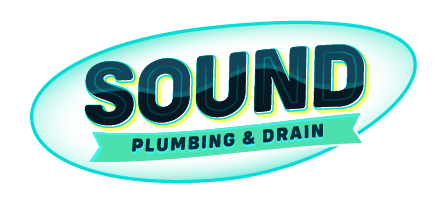Here's What We Have Covered In This Article
1. How Can You Tell It’s a Plumbing Emergency?
The first step is recognising you have a problem that needs immediate attention. A plumbing emergency often announces itself through sudden changes in your water system. For example, you might hear the sound of running water even when no taps are on, notice water pooling where it shouldn’t, or see a dramatic drop in water pressure.
Common culprits include:
- Burst pipes that can flood your home quickly.
- Toilets that won’t stop overflowing.
- Persistent leaks that cause water to drip or puddle unexpectedly.
If you spot unusual noises, rising water levels, or water stains on your walls or ceiling, act fast. Identifying the signs early helps prevent the situation from escalating.
2. Where Is the Main Water Shutoff Valve in Your Home?
Knowing where your main water shutoff valve is located can make all the difference during a plumbing emergency. In most homes, you’ll find this valve near where the water supply enters your house. This is often:
- In the basement.
- In a utility room.
- On an exterior wall close to your water meter.
For homes without basements, it may be outside, near the foundation. Turn the valve clockwise to stop the flow. If you’re unsure of its location, take some time now to find it. Label it clearly so everyone in your household knows where it is.
Fast Plumbing Repairs in Your Neighborhood
Serving homes and businesses across Hazel Dell, Vancouver, Portland, and surrounding areas, our expert plumbers are ready to handle any issue. Contact us for fast, dependable service today!
3. Can You Shut Off Water to a Specific Fixture Instead?
If the problem is isolated to a single fixture, like a leaking sink or a running toilet, you don’t need to shut off the entire water supply. Most fixtures have their own shutoff valves. For example:
- Under sinks, you’ll find small valves attached to the pipes.
- Toilets usually have a shutoff knob at the base of the toilet, on the wall.
- Appliances like dishwashers and washing machines also have individual valves nearby.
Turn the valve clockwise to stop water to just that fixture. This can be a quicker and less disruptive way to handle small problems while keeping the rest of your plumbing system operational.
4. What Should You Do Before a Plumbing Emergency Happens?
The best way to handle a plumbing emergency is to prepare for it before it happens. Here are a few steps you can take:
- Familiarise yourself with your plumbing layout, including the location of the main shutoff valve and individual fixture valves.
- Keep tools like an adjustable wrench or valve tags handy.
- Schedule regular plumbing checks to catch potential problems early.
- Consider installing a water leak detector to alert you to issues before they get out of hand.
Being prepared ensures you can act quickly when needed, saving you stress and money in the long run.
Plumbing Upgrades for Homes and Businesses
From water heaters to trenchless solutions, we serve communities like Hazel Dell, Salmon Creek, Vancouver, and Portland. Upgrade your system with our expert team—get a free quote now!
5. When Should You Call a Plumber?
Not every plumbing emergency can be resolved with a quick turn of a valve. If you can’t locate the shutoff valve, the leak persists, or there’s extensive flooding, it’s time to call a professional. Plumbers have the tools and expertise to tackle emergencies like:
- Pipes that have burst in inaccessible areas.
- Severe leaks that require immediate repair.
- Water damage that needs professional restoration.
It’s always better to call for help sooner rather than later. A small delay can turn a manageable problem into a costly disaster.
6. What Tools and Equipment Should You Keep Handy?
Having a basic plumbing kit ready can make shutting off water during an emergency much easier. Consider keeping the following items nearby:
- An adjustable wrench for stubborn valves.
- Pipe tape to seal minor leaks temporarily.
- A bucket to catch any dripping water.
- Valve tags to label shutoff points for quick identification.
These simple tools can save valuable time and reduce damage while you wait for professional assistance.
7. What Else Can You Do to Stay Safe During a Plumbing Emergency?
In any emergency, staying calm is essential. Once you’ve shut off the water, assess the damage and take steps to protect your home. For example:
- Use towels or buckets to contain water.
- Turn off electricity in affected areas if water has come into contact with outlets or appliances.
- Notify your insurance company if the damage is extensive.
By acting quickly and staying prepared, you can handle plumbing emergencies with confidence.
FAQs About Turning Off Water During Plumbing Emergencies
How do I turn off the water for plumbing repairs?
To turn off water for repairs, locate the shut-off valve for the specific fixture. For sinks, this valve is usually under the sink, connected to the supply lines. Toilets have a small valve near the base of the toilet, while appliances like dishwashers have valves close to the water supply line. Turn the valve clockwise to stop water flow. If you’re working on a larger repair or can’t find the fixture valve, shut off the main water supply instead.
How do you turn off water when pipes burst?
If a pipe bursts, act fast to prevent flooding. Locate the main water shut-off valve, which is usually near your water meter or where the water supply enters your home. Turn the valve clockwise to stop the flow of water entirely. After shutting off the water, drain the pipes by turning on all the taps in your home. This will relieve pressure and reduce the amount of water leaking from the damaged pipe.
Where is the emergency shut-off valve located?
The main shut-off valve is typically found in one of the following locations:
- In the basement near the foundation.
- Inside a utility room or garage.
- On an exterior wall, close to where the water line enters your home.
- Outside near the water meter box (common in warmer climates).
Familiarise yourself with its location before an emergency occurs, and make sure everyone in your household knows where it is.
How do I turn off the water to my house and drain pipes?
To turn off water to your entire house, locate the main shut-off valve and turn it clockwise until it stops. Once the water is off, open all taps—starting with the ones on the top floors and working your way down. This allows the pipes to drain completely, relieving pressure and reducing the risk of further leaks. Remember to turn off your water heater as well to avoid damage to the system.
Keep Your Plumbing in Top Shape with Expert Maintenance
Our maintenance services cover areas within a 25-mile radius of Hazel Dell, including Vancouver, Battle Ground, and Portland. Schedule a visit today and prevent costly breakdowns.






